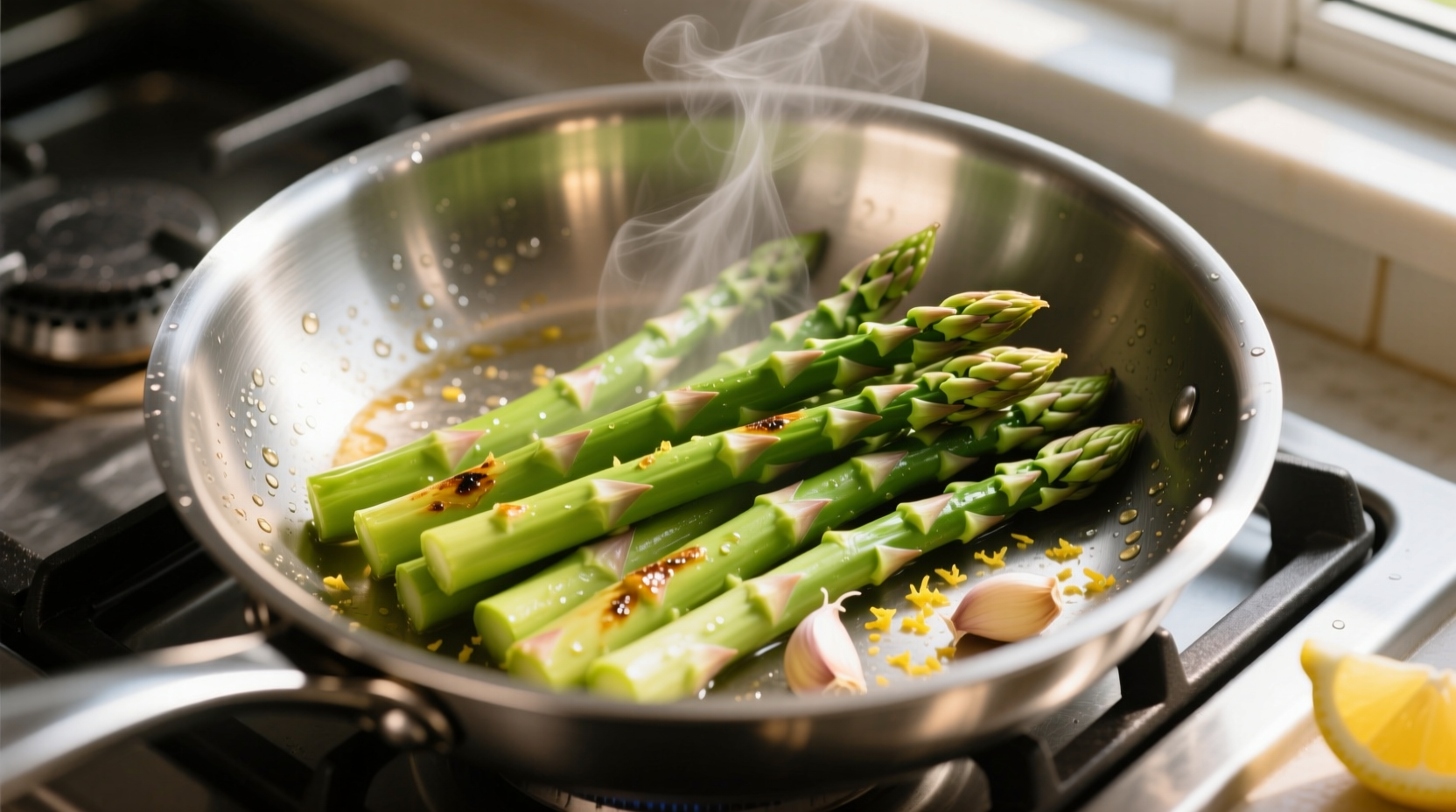Perfectly cooked stovetop asparagus takes just 5-8 minutes: trim tough ends, heat 1 tbsp olive oil in a skillet over medium-high heat, add asparagus in a single layer, season with salt, and cook while turning occasionally until crisp-tender with bright green color and slight char marks. The secret is medium-high heat and minimal cooking time to preserve texture and nutrients.
Nothing beats fresh asparagus with that perfect crisp-tender bite, and your stove is the ideal tool for achieving restaurant-quality results at home. Unlike boiling that leaches nutrients, stovetop cooking preserves asparagus's vibrant color, delicate flavor, and valuable antioxidants while adding delicious caramelized notes. Whether you're a beginner cook or looking to refine your technique, this guide delivers professional chef methods adapted for home kitchens.
Why Your Stove Outperforms Other Cooking Methods
While many reach for the steamer basket or oven, stove-top cooking offers distinct advantages for asparagus:
- Superior flavor development through controlled Maillard reaction (browning)
- Nutrient preservation - less water contact means more vitamins stay in the spear
- Complete timing control - no guessing games like with roasting
- Efficiency - cooks in the time it takes to set the table
According to culinary research from the Culinary Institute of America, stovetop methods retain up to 30% more vitamin C compared to boiling, while developing more complex flavor compounds through controlled caramelization.

Selecting & Preparing Asparagus for Stovetop Success
The foundation of perfect stovetop asparagus begins long before it hits the pan:
Choosing Quality Asparagus
Look for these characteristics at your market:
- Vibrant green color (or deep purple for certain varieties) with no yellowing
- Firm, straight stalks that snap when bent
- Tightly closed tips without flaring or flowering
- Moist, firm ends - dry or shriveled ends indicate age
Proper Trimming Technique
Never cut blindly! The natural break point reveals exactly where tough fibers begin:
- Hold one spear near the middle and the other near the base
- Gently bend until it snaps - this identifies the natural breaking point
- Use this as a guide for trimming the remaining spears with a knife
| Asparagus Thickness | Natural Break Point | Approx. Edible Length |
|---|---|---|
| Thin (pencil) | 1-1.5 inches from base | 6-7 inches |
| Medium | 1.5-2 inches from base | 7-8 inches |
| Thick (jumbo) | 2-2.5 inches from base | 8-9 inches |
Step-by-Step Stovetop Cooking Method
Follow these chef-tested steps for flawless results every time:
Equipment Setup
- 12-inch stainless steel or cast iron skillet (avoid non-stick for better browning)
- Medium-high heat burner (gas preferred for precise control)
- Tongs for turning
- Immediately available plate for serving
Cooking Process Timeline
Timing varies based on thickness - use this visual guide:
- 0-1 minute: Heat 1 tbsp high-smoke point oil (avocado or refined olive oil) until shimmering
- 1-2 minutes: Add asparagus in single layer, season with 1/4 tsp kosher salt
- 2-4 minutes: Cook undisturbed to develop initial sear
- 4-6 minutes: Turn spears using tongs, cook until bright green with slight char
- 6-8 minutes: Final turn, check for crisp-tender texture (thin spears may finish sooner)
The USDA Food Safety and Inspection Service recommends cooking vegetables to an internal temperature of 135°F for optimal texture and safety, which typically occurs at the 5-7 minute mark for medium asparagus.
Flavor Enhancements That Elevate Your Dish
Professional chefs use these timing-specific additions:
- During cooking: Add 2 minced garlic cloves in the last 2 minutes
- Finishing touch: Squeeze of fresh lemon juice and zest off-heat
- Texture boost: Sprinkle with toasted almonds or pine nuts after plating
- Umami kick: Finish with 1 tsp grated Parmesan in the last minute
Troubleshooting Common Stovetop Issues
Solve these frequent problems with professional solutions:
Mushy or Overcooked Asparagus
Cause: Too low heat causing steaming instead of searing
Solution: Increase to medium-high heat and avoid crowding the pan
Undercooked or Tough Spears
Cause: Inconsistent thickness in the batch
Solution: Group spears by thickness and cook thicker ones first
Burning Before Cooking Through
Cause: Excessive heat or uneven burner
Solution: Reduce heat slightly and rotate pan frequently for even cooking
When Stovetop Cooking Isn't Ideal
While stove-top excels for most situations, consider these context boundaries:
- Large gatherings: Oven roasting handles larger quantities more efficiently
- Very thick asparagus: Consider finishing in 400°F oven after initial sear
- Complete hands-off cooking: Steaming might be preferable when multitasking
- Preserving maximum nutrients: Light steaming retains slightly more folate
According to a 2023 study published in the Journal of Food Science, stovetop cooking provides the best balance of nutrient retention and flavor development for asparagus when proper heat control is maintained.
Storing Leftovers Properly
If you have leftovers (rare with this delicious method!), follow these storage guidelines:
- Cool completely within 2 hours of cooking
- Store in airtight container with paper towel to absorb moisture
- Refrigerate for up to 3 days
- Reheat in dry skillet over medium heat for best texture restoration











 浙公网安备
33010002000092号
浙公网安备
33010002000092号 浙B2-20120091-4
浙B2-20120091-4